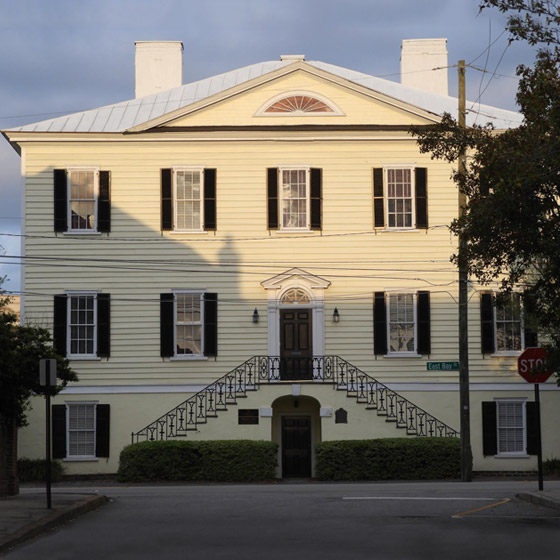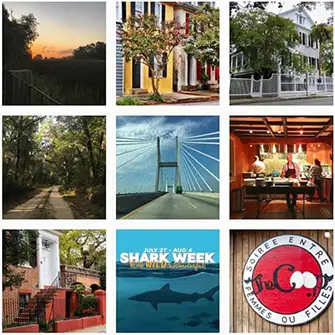
321 East Bay Street: Blake-Grimke House
Today we visit the Blake-Grimke House at 321 East Bay. Currently a law office, this house retains the spirit of illustrious inhabitants.Today we visit the Blake-Grimke House at 321 East Bay. Currently a law office, this house retains the spirit of illustrious inhabitants.
Before 1789, William Blake, a planter who owned land in both South Carolina and England, built this impressive house on the edge of Ansonborough; fortunately the house escaped the 1838 fire. Blake, whose ancestors arrived in Charles Town as early as 1683, was the grandson of Joseph Blake, the proprietary governor from 1696 until his death in 1700.
At one time the widow of Arthur Middleton, South Carolina Signer of the Declaration of Independence, rented 321 East Bay; this was probably due to a family connection as she was an Izard and William Blake’s wife was also an Izard.
In 1803, after Blake’s death, Judge John Faucheraud Grimke bought the house. He needed a large property for his many children, two of which are the most famous residents of 321 East Bay Street, Sarah and Angelina Grimke.
Sarah and Angelina will always be known as Charleston’s famous abolitionist sisters who championed rights for women and for slaves. Born into a family of jurists and wealthy planters, the Grimke Sisters grew up in a culture served by enslaved African Americans. Their home at 321 East Bay had slaves as did the plantations owned by their father and brothers. Unlike most of Charleston society, the Grimke Sisters considered slavery to be anathema and were bold and outspoken about their views. After Judge Grimke died, the sisters moved north to live in Quaker communities where they wrote and published abolitionist literature.
Several books have been written about the Grimke Sisters over the years, but The Invention of Wings, an historical novel by Sue Monk Kidd published in 2014, captured the hearts, minds and imaginations of people, especially women, throughout the United States.
The Grimke Sisters were finally given the honor due them; a marker was installed on the grounds of 321 East Bay in 2015 by the College of Charleston Friends of the Library. The text is as follows:
This Charleston double house was built before 1789 by William Blake, a planter and descendant of former Proprietary Governor Joseph Blake. By 1803 Mary Smith Grimke, descendant of Landgrave Thomas Smith, and Judge John F. Grimke, a planter and state Supreme Court justice, and their 11 children occupied the property. Among them were Sarah (1792-1873) and Angelina (1805-1879) Grimké who became leading advocates for equal rights for African Americans and women. From 1836-1838 the sisters, the first female agents of the abolitionist movement, traveled the Northeast as lecturers and organizers. In 1837 they helped organize the first national convention of white and black women. Also in 1837 Sarah published a full-fledged argument for women’s equal rights. The next year Angelina became the first American woman to address a legislative body, speaking to a committee of the Mass. legislature. Neither sister ever returned to Charleston. Sponsored by the College of Charleston Friends of the Library, 2015
We will leave Ansonborough on this high note; next week we’ll move on to another part of historic Charleston.



